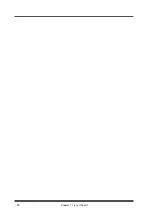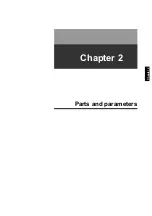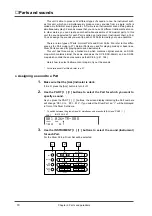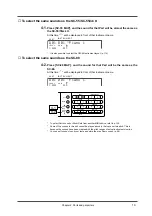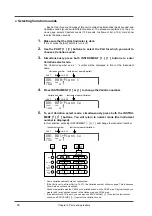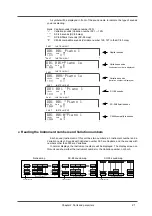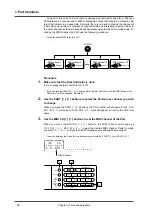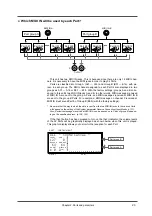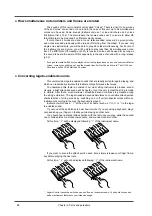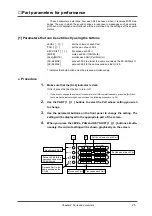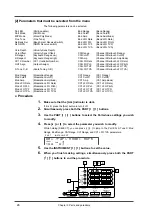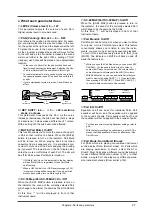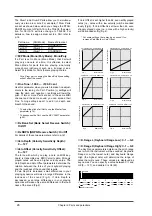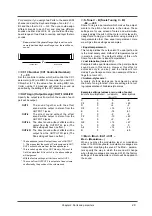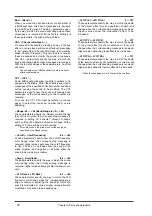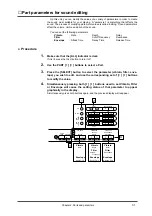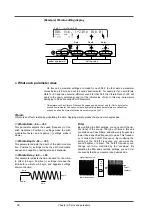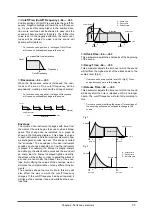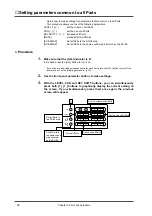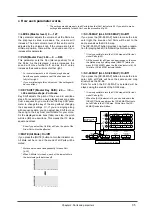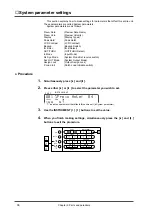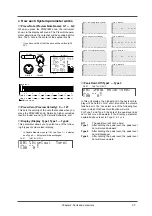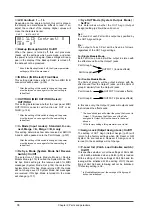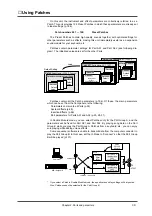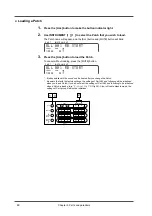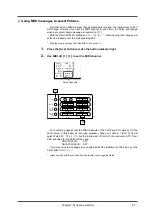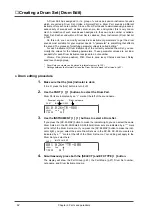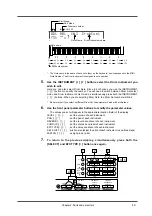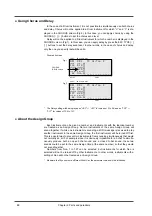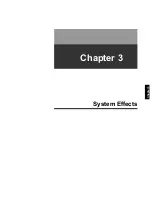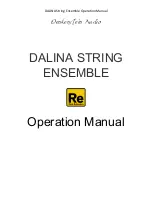
Bnd ~ (Bend ~ )
When you move the pitch bend lever or pitch wheel of
a MIDI keyboard, pitch bend messages are transmit-
ted, modifying the sound. The Bnd ~ parameters spec-
ify the way in which the sound will change when these
messages are received. With the factory settings of
these parameters, the pitch will be modified.
CAf ~ (Channel aftertouch ~ )
On some MIDI keyboards, pressing down on the key
after a note is played will cause aftertouch messages
to be transmitted. (Channel Aftertouch is sometimes
called Channel Pressure.) This unit is able to receive
these messages and modify the sound in response.
The CAf ~ parameters specify the way in which the
sound will change when these messages are received.
With the factory settings of these parameters, no effect
will occur.
* Check whether your MIDI keyboard is able to transmit
aftertouch messages.
CC1 ~ (CC1 ~ )
Some MIDI keyboards allow controller numbers to be
assigned to the sliders. When these sliders are moved,
messages of the specified controller number are trans-
mitted, causing the sound to be modified. The CC1
parameters specify how the sound will change when
messages of the corresponding control number are
received.
First use the CC1 C.Number parameter (previous
page) to select the controller number that you are
assigning.
~ Range -24 — +24 (Bend Range is
±
0 — +24)
These parameters specify the maximum pitch change
that will occur when the corresponding message is
received. A setting of 12 allows 1 octave of change,
and a setting of 24 allows 2 octaves of change. With a
setting of 0, there will be no pitch change.
* For some sounds, the pitch may not rise as high as
specified by the Range setting.
~ Cutoff (~ Cutoff frequency)
-64 — +63
These parameters specify how the cutoff frequency
will change when the corresponding message is
received. Higher values will cause the cutoff frequency
to rise. Positive (+) settings allow the sound to be
made brighter, and negative (-) settings allow the
sound to be made more mellow.
~ Amp (~ Amplitude)
-64 — +63
These parameters specify the way in which the sound
will change when the corresponding message is
received. Higher values allow a greater increase in vol-
ume.
~ LFO Rate (~ LFO Rate)
-64 — +63
These parameters specify the way in which the LFO
frequency will change when the corresponding mes-
sage is received, adjusting the speed at which the
sound is modulated or varied. Higher values allow the
modulation or variation to be speeded up.
~ LFO Pch (~ LFO Pitch)
0 — 127
These parameters specify the way in which the depth
of the vibrato effect (cyclic modulation of pitch) will
change when the corresponding message is received.
Higher values allow the modulation effect to be
increased.
~ LFO TVF (~ LFO TVF)
0 — 127
These parameters specify the way in which the depth
of the growl effect (cyclic modulation of tone) will
change when the corresponding message is received.
Higher values allow the growl effect to be increased.
~ LFO TVA (~ LFO TVA)
0 — 127
These parameters specify the way in which the depth
of the tremolo effect (cyclic modulation of volume) will
change when the corresponding message is received.
Higher values allow the tremolo effect to be increased.
* When these settings are at 0, there will be no effect.
Chapter 2. Parts and paramters
30
Содержание SoundCanvas SC-88 Pro
Страница 9: ...Chapter 1 Try out the unit Quick start Chapter 1...
Страница 18: ...Chapter 1 Try out the unit 16...
Страница 19: ...Chapter 2 Parts and parameters Chapter 2...
Страница 47: ...Chapter 3 System Effects Chapter 3...
Страница 57: ...Chapter 4 Insertion Effects Chapter 4...
Страница 97: ...Chapter 5 Convenient functions Chapter 5...
Страница 121: ...Chapter 6 Using the unit with a personal computer Chapter 6...
Страница 131: ...Chapter 7 Chapter 7 MIDI and the unit...

